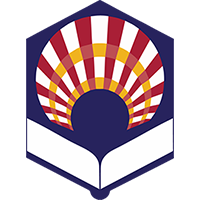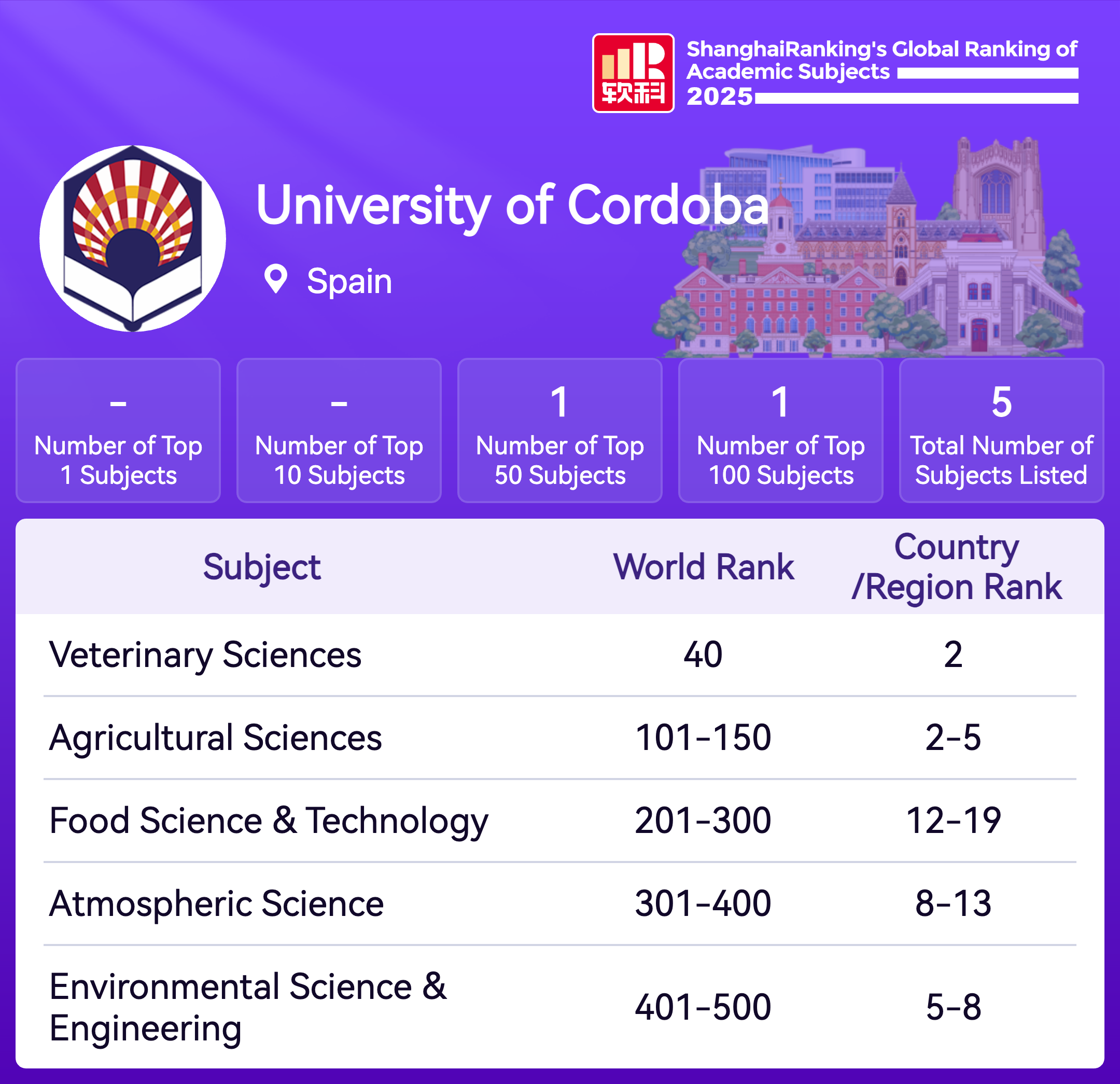 901-1000
901-1000 


University of Cordoba Two centuries of history support the course of the University of Cordoba, which was founded as such in 1972, has its roots in the Free University in the province worked in the late nineteenth century and has ancient studies such as Veterinary unique Andalusia. His youth and their average size, the CCU has 19,000 students, slightly more than 1,300 teachers and 700-workers have given the dynamism needed to be tailored and enter the twenty-first century as a university teacher quality and proven scientifically. Studies of the UCO ranging from the Humanities and Social Sciences at Legal and Health Sciences and the scientific and technical careers, three areas that correspond to its structure into three main campuses: the social law, as part of the city center , the Health, west of the capital, and the agri-food, scientific and technical Rabanales in this area. In addition, the CCU has the Polytechnic School of Belmont, located about forty miles outside of Cordoba. Rabanales campus is the best proof of the modernization process that characterizes the university. Its facilities make room for the most advanced infrastructure for research and teaching, while integrating a range of complementary services that make it one of the leading educational complex in Andalusia. Rabanales concentrated much of the scientific production of the University, situated at the forefront of research in the autonomous community of Andalusia and among the most important research institutions nationwide. Both research and teaching are understood at the University of C贸rdoba as the two great pillars of the institution, always with the same goal: quality. In this objective is also the central role that the UCO is playing in developing the European Higher Education Area. Teaching, Research, Quality and Europe are, therefore, the maximum currently governing the life of the university. The University of Cordoba has 202 research teams, according to data from the last Andalusian Research Plan (IAP) of the Junta de Andaluc铆a. They involve more than one thousand scientists who have managed to put the institution into a leadership position as far as Andalusia scientific production is concerned, while the have been placed in the top positions of effectiveness research in the Spanish science . Not surprisingly, the University has in its laboratories with a staff of scientists of national and international prestige, as evident by the awards and distinctions received from different parties. The research groups at the University of Cordoba are present in nine areas as diverse as Agribusiness, Life Sciences, the Health, Social Sciences, Economics and Law, Physics, Chemistry and Mathematics, Humanities, Environment, Information Technology and Communication and Production Technology, although the first three works in which the largest number of researchers. All participate in the Andalusian Research Plan in the national program and in the various European plans. In fact there are several scientific teams have become part of inter-university networks of excellence created in the EU. In touch with reality Besides its participation in major public research programs and thus, in the advance of Spanish and European science, scientists at the University of C贸rdoba work in permanent contact with their immediate environment. This pipeline is the Office of Transfer of Research Results (TTO), responsible for contacting there searchers with companies that require technology. Within this framework are inserted between contract research teams, research institutes and professors of the UCO and the business to perform work that will contribute to satisfy the scientific demands of society and bring it closer to the university. That same goal has presided over the launch of Science and Technology Park Rabanales 21 sponsored by the University, which is located next to campus, will serve as headquarters to a number of technology companies, research and development and setting for contact between scientists and business Cordoba. Support Services For the development of scientific activity, teachers and their teams have the help of the Central Service of Research Support (SCAI), which provides access to units such as proteomics, sample bank, the scientific imaging service The microscope, the mass spectrometry, among others, and, secondly, with the Animal Research Service. Finally, the University has its own program of research grants, which for nearly a decade makes it easy for groups to financial resources and human technical improvements necessary for the development of their business.
 901-1000
901-1000 
| Subject | Rank |
|---|---|
Veterinary Sciences | 40 |
Agricultural Sciences | 101-150 |
Food Science & Technology | 201-300 |
Atmospheric Science | 301-400 |
Environmental Science & Engineering | 401-500 |

